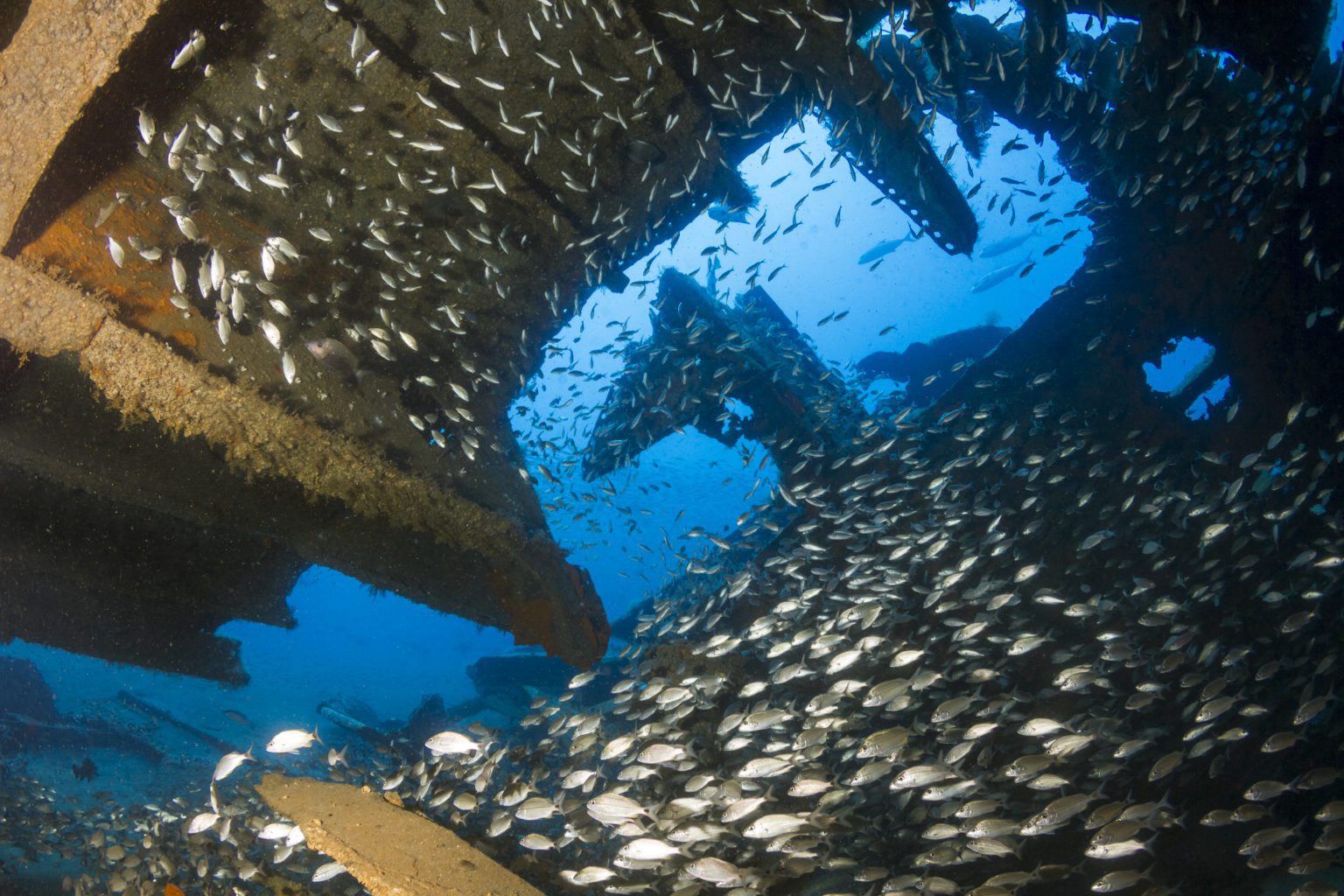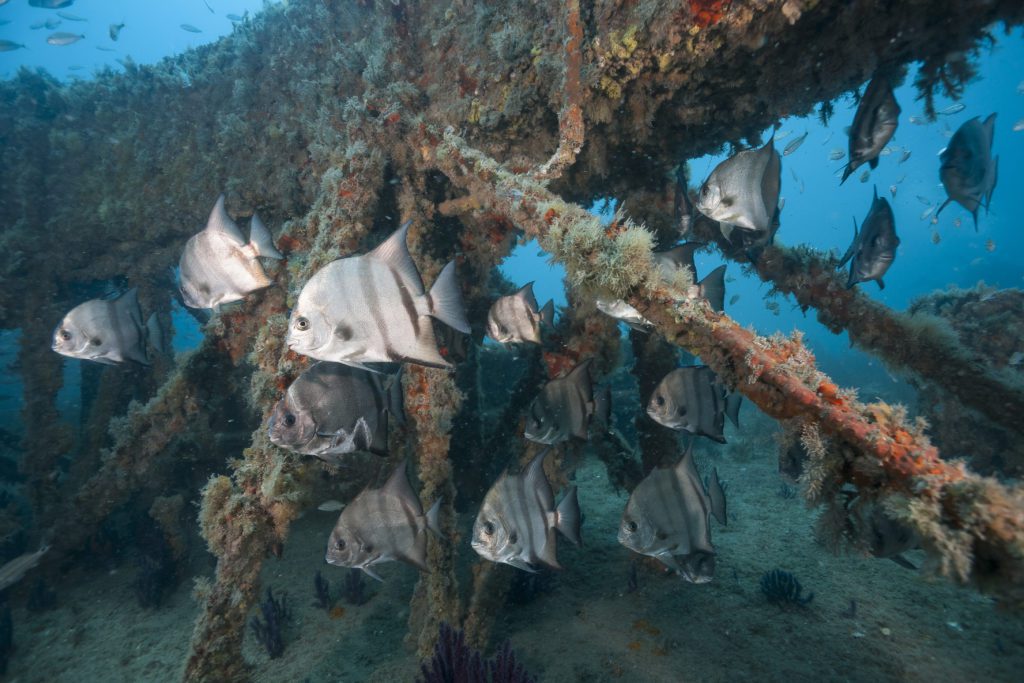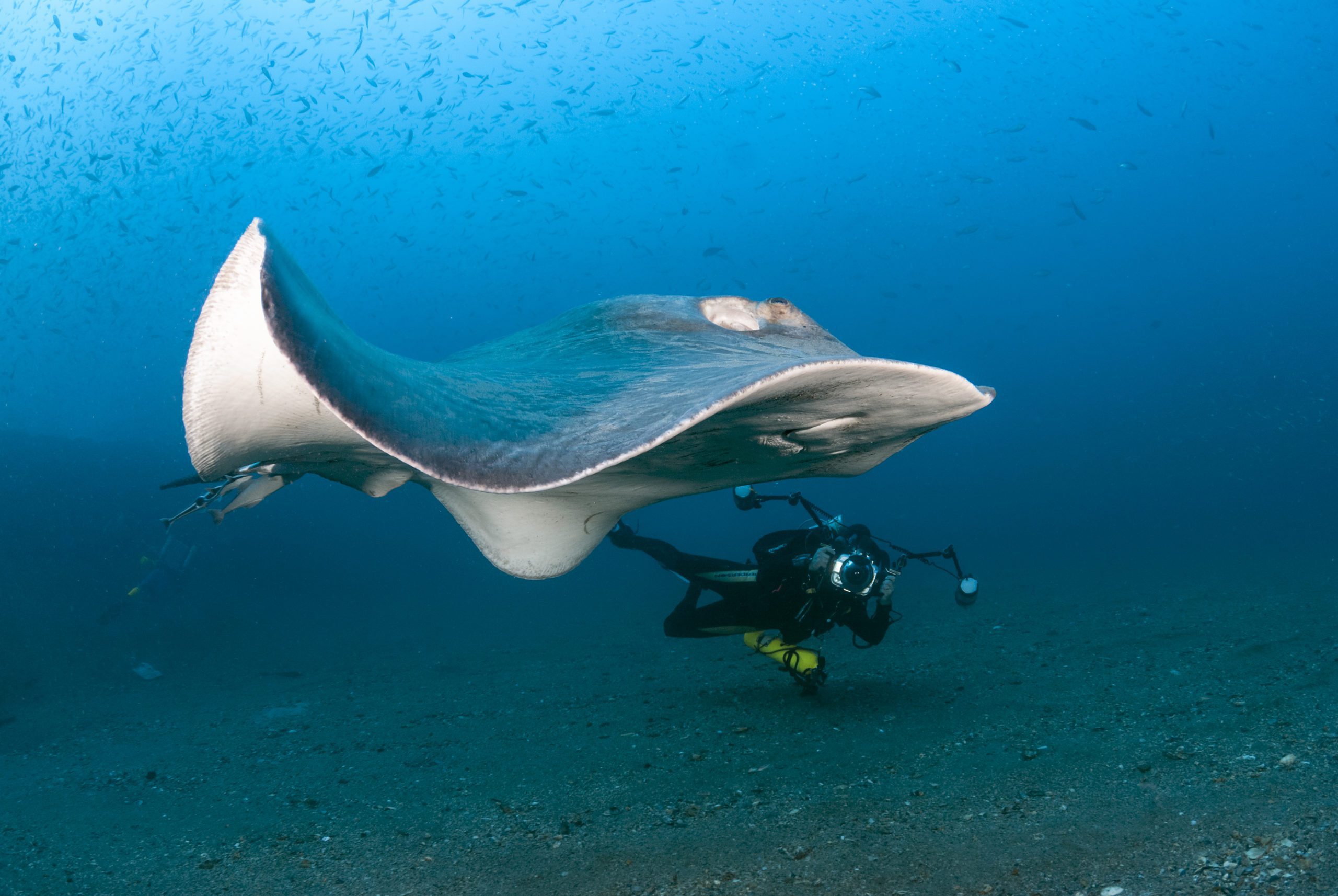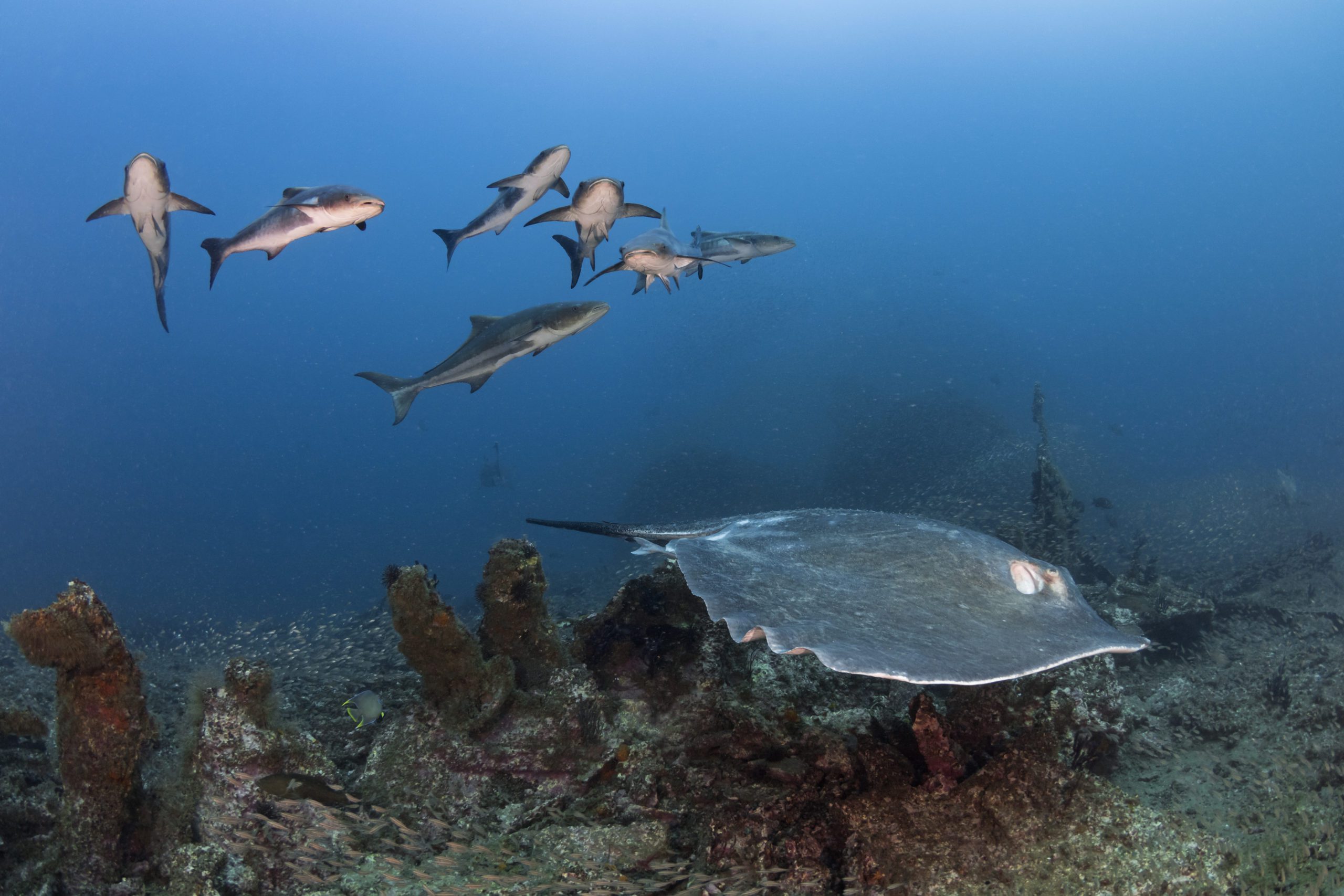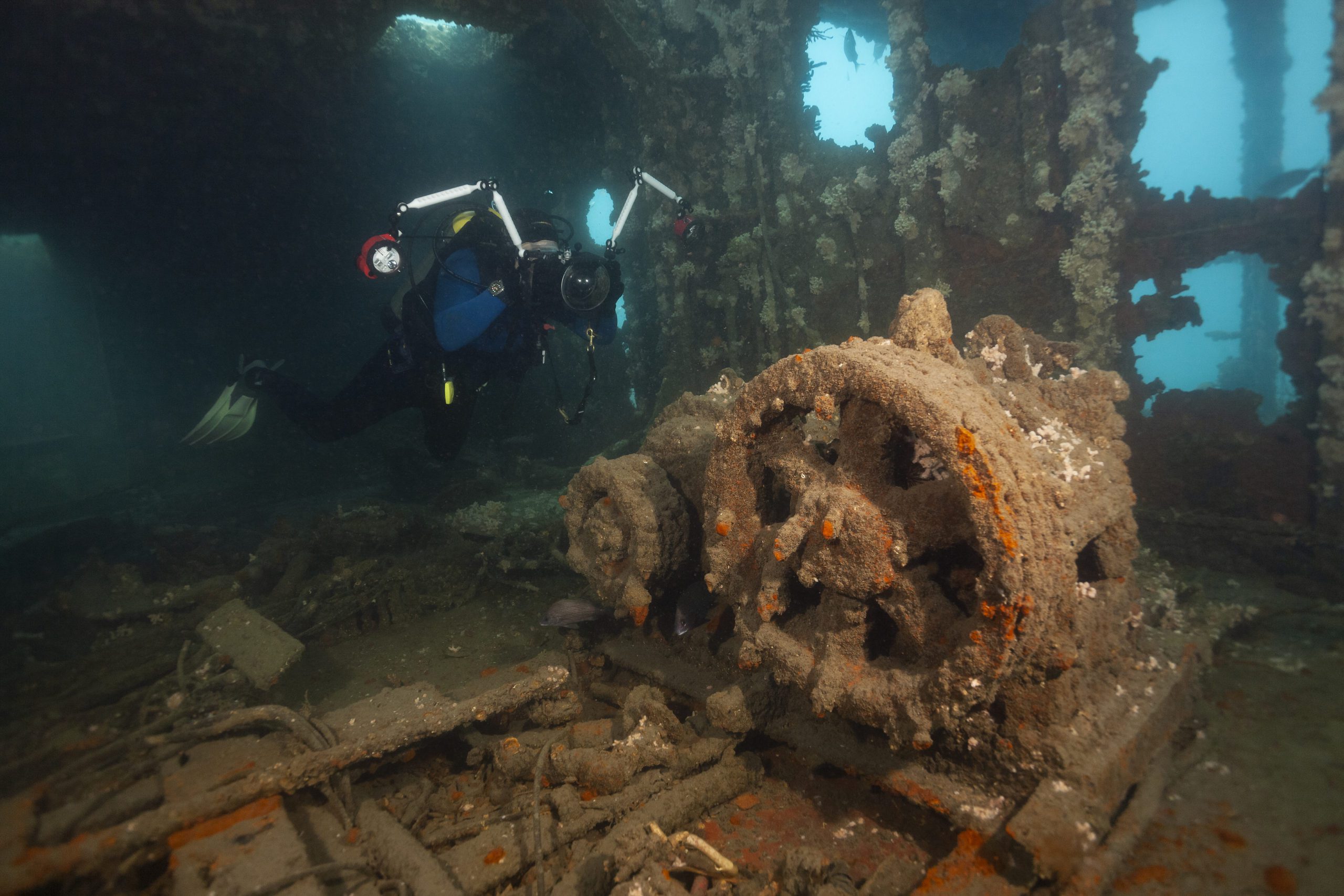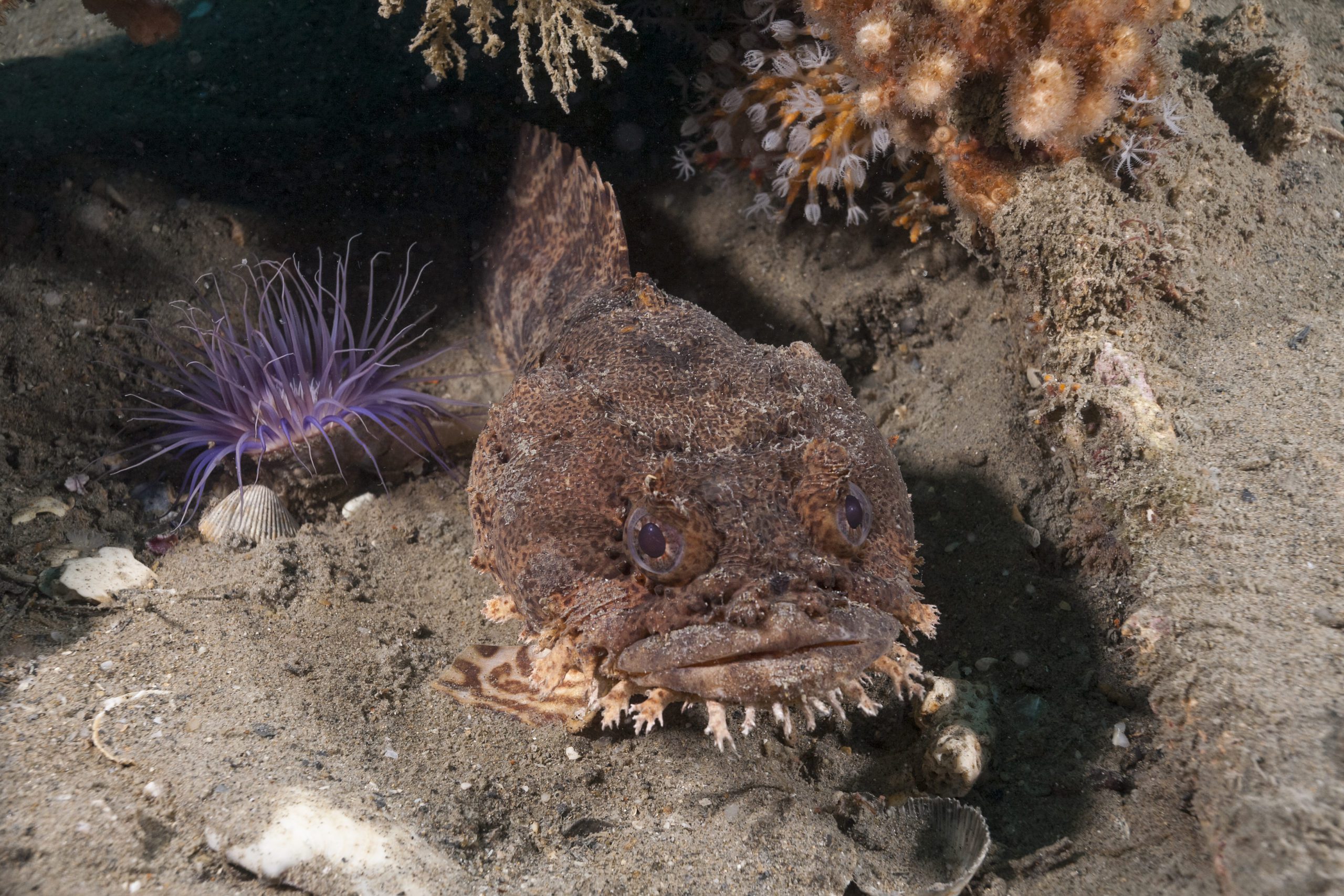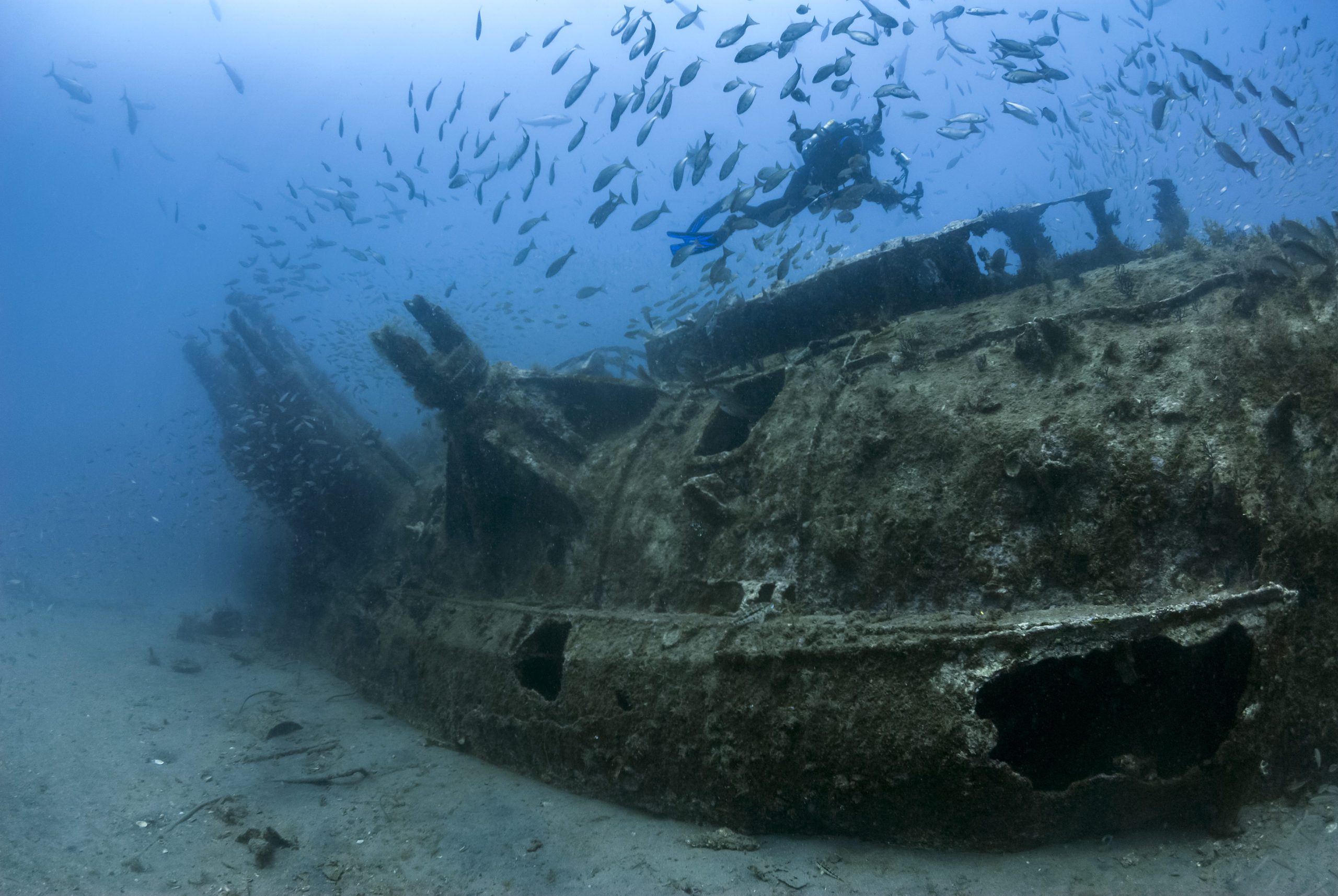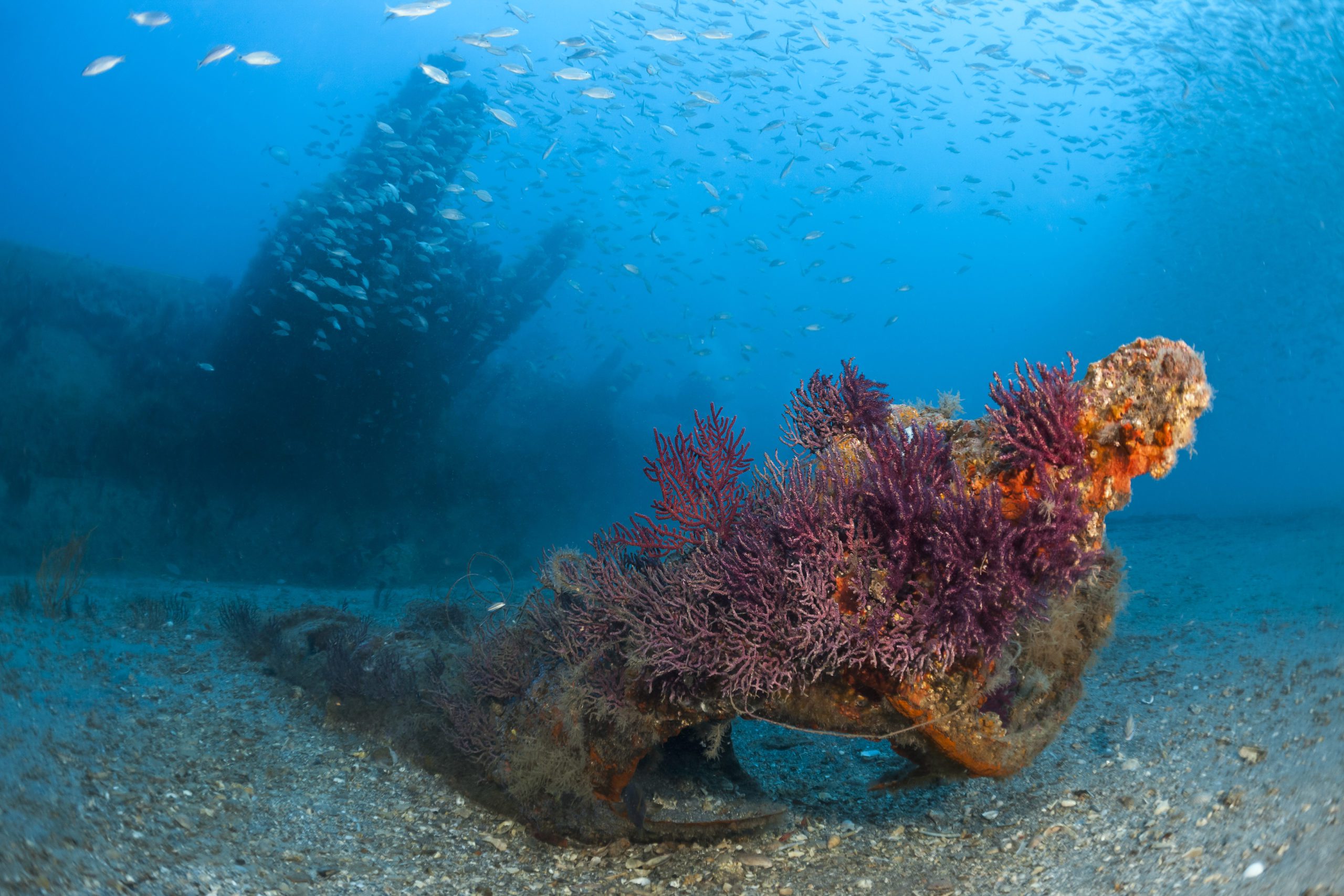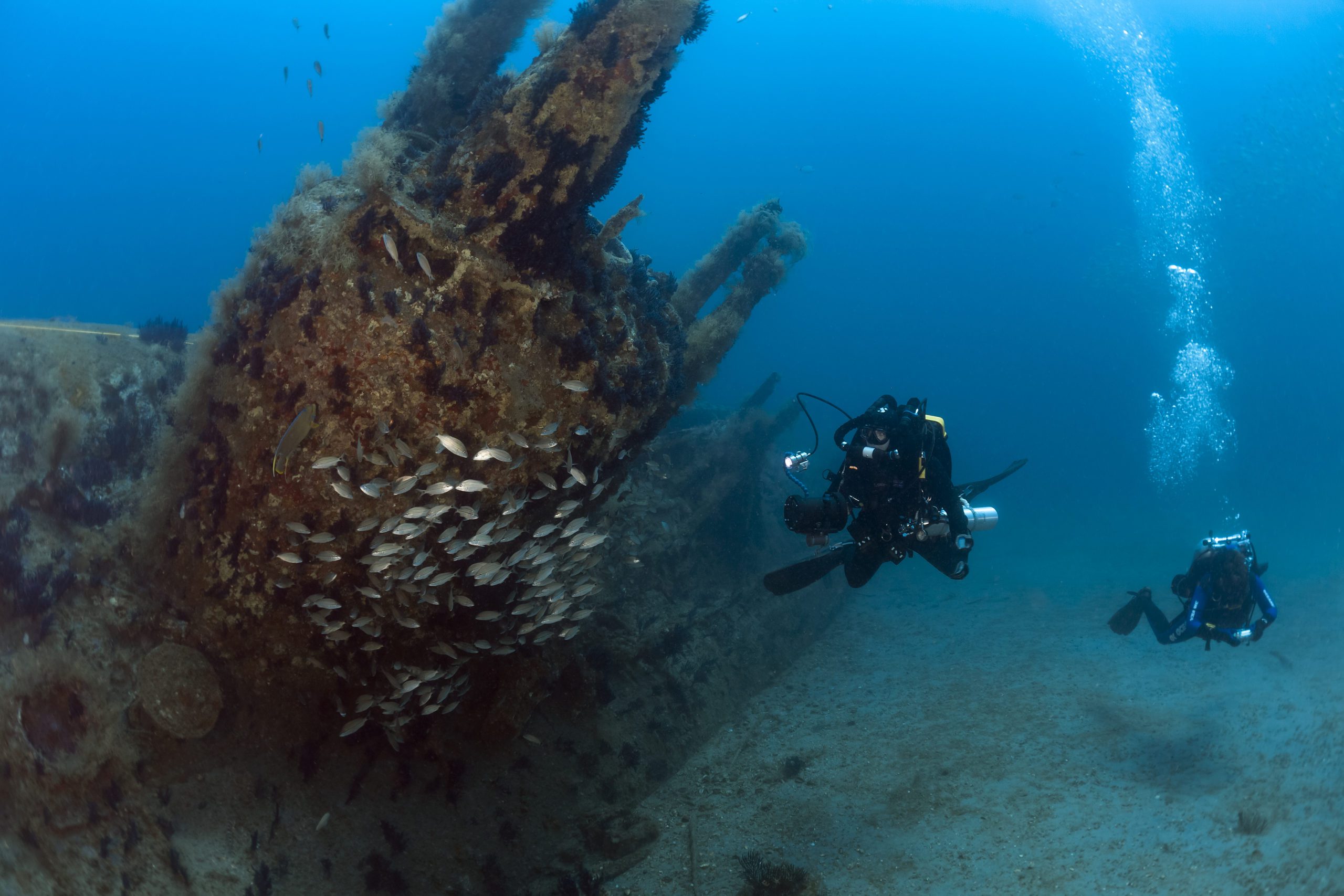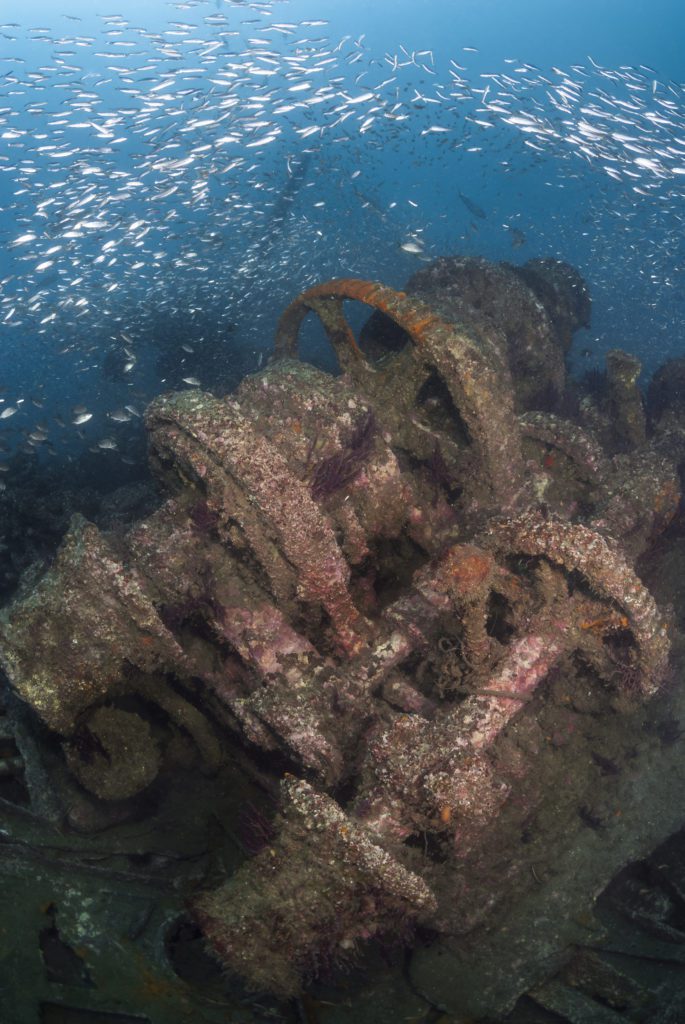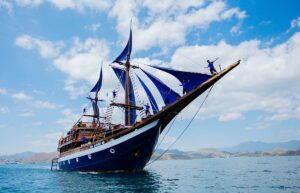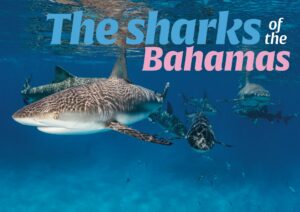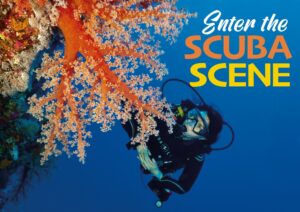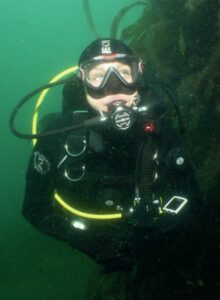Scuba Diver North America’s Editor Walt Stearns heads for North Carolina’s Outer Banks in search of historic shipwrecks and sand tiger sharks.
There is a kernel of truth to the coastal waters of North Carolina’s ownership to the title ‘Graveyard of the Atlantic’. Going as far back as the formation of the Nation’s original 13 colonies, waters off North America’s coast have seen the end to a great number of ships. Around 700 in all, give or take a dozen. Then again, large numbers of ships have perished in other places too.
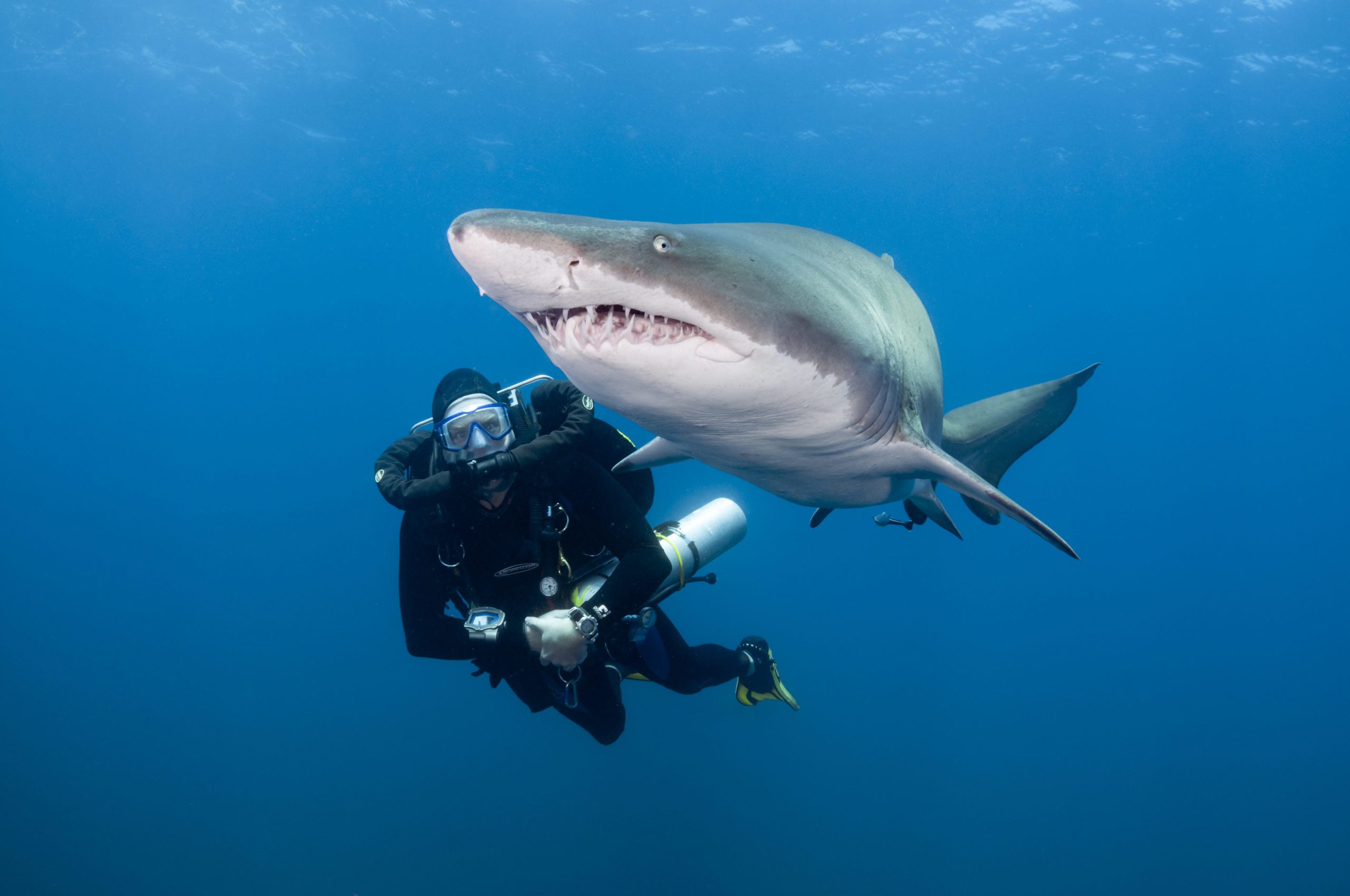
Even the Great Lakes can boast about having more wrecks than the Carolina coast. Lake Huron alone holds 1,100 documented wrecks in its belly. What makes the number of wrecks off North Carolina’s Outer Banks, from Cape Hatteras south to Cape Fear, so interesting is that while half were victims befallen to nature’s whims (namely storms), the other half were sent to the bottom by human confrontations.
I don’t think there is an East Coast Atlantic wreck diver who is not unfamiliar to just how many wreck sites were created by the ‘Battle of the Atlantic’. The most infamous in US history was the onslaught created by Germany's marauding U-boats right on our doorstep.
Torpedo Alley
Commanded by Admiral Karl Donitz, Germany’s U-boatwaffe historically proved to be one the most-effective offence weapons on the high seas during the first two years of World War Two. History can also account for their first series of strikes against American shipping, in 1941, with operation Paukenschlag (Drumbeat), comprised of five type-IX class boats.
Between their arrival in US territorial waters, 27 December 1941 and 6 February 1942, the drumbeaters had sunk 25 ships. By the close of that same year, U-boat operations had swelled in rank along the US continental shelf (between Maine and the Florida Keys), and their effectiveness could be measured by close to 100 kills with only 21 losses of the own.
Topping the list of historic war causalities that divers come to North Carolina to explore is the wreck of the WE Hutton. Like many of the better wreck dives off this coast, the 36-mile boat ride due south out of Morehead City can take the better part of an hour and a half.
Torpedoed by the German U-boat U-124 after rounding Cape Lookout on the night of 18 March 1942, the 132-metre tanker lies upside with her superstructure crushed into sand at a depth of 40m. For the most part, its appearance is more like a monstrous sausage cracked open in several places, with the highest part of the wreck rising nine metres off the bottom at the stern. Entry into the hull is possible through several wide openings, though penetration should be left to those both highly experienced and equipped. Back in the mid-1970s, salvagers managed to raise the propeller after blasting it loose from the shaft, leaving a large void between the stanchion and rudder.
When this wreck was first found, it was first assumed to be that of the Papoose, an equally similar size tanker measuring 125 metres in length. And like the Hutton it too was sunk by U-boat U-124 that same night of 18 March 1942, a half hour apart. Adding to the mystery, the wreck everyone assumed to be the Papoose never gave up a single item to clearly identify which wreck was which until the remains of the real Papoose (located off Cape Hatteras) were confirmed in 2008 after years of having it identified as the 463-foot tanker San Delfino, which was sunk 10 April 1942 by the U-203.
This type of confusion is just one example in having so many shipwrecks so close together.
Diving The U-352
After a year of terrorizing the coast, the United States and Allied forces improved shipping through organized convoys with naval escorts while homeland defense put out more long-range aircraft patrols, cruisers armed with depth charges and improved methods of detecting submarines with active sonar systems, radio triangulation and coded message intercepts. Breaking the enigma code soon made work for U-boats suicidal. By the end of 1942, U-boat causalities rose to 64.
In the first months of the following year, 94 boats were sunk, peaking in May, which became known as Black May, with 41, one of them being the U-352.
At 66 metres long, the U-352 was a VIIC design, which included an 88mm deck gun mounted forward of the conning tower. Surprisingly, the U-352 had not one kill to her credit, worse yet the last ship she fired two torpedoes at on 9 May 1942 was the US Coast Guard Cutter Icarus. Dogging the salvo, the Icarus made her own attack run, firing five depth charges, which severely damaged the U-boat internally, wrecked the conning tower and blew off its deck gun.
Two more depth charge attacks forced the U-352 to the surface, where its commander KL Rathke ordered his crew to scuttle and abandon the ship. In the end, 17 of her crew were killed, with the rest taken into Charleston, SC, as prisoners of war.
For a battle so well recorded, for a while nobody knew the exact whereabouts of the U-352 until Captain George Purifoy, owner of Olympus Dive Center and three close friends – Rod Gross, Dale McCullough and Claude Hall (who started the search through extensive research of World War Two naval archives) – decided to seek the downed sub. The hunt lasted ten years before it was found in April 1975, a full mile and a quarter from the original co-ordinates of her sinking logged by the Icarus.
Today, it is one North Carolina’s signature wrecks and the one that most coming down to Morehead City want to dive. My first impression of it as we follow the descent line was that the wreck, sitting on its keel, with a 45-degree list to starboard, looked small. Life on most medium-size attack-class warships was anything but luxurious. Life on a U-boat with a max 20-foot beam is, in a nutshell, close!
While still largely intact, most of what you see on the bottom is the remains of the pressure hull, as the majority the U-boat's outer casing has rusted away. For experienced NC divers, the biggest challenge of the U-352, as well as 99 percent of the wrecks here in waters over 21m, is waiting for the boat to hook up on the wreck.
The procedure here is a member of the crew has to go down manually to tie into the wreck – in the U-352’s case, 36m to the bottom – before anyone else can enter the water. Depending on conditions the drill can take 15 to 20 minutes. To expedite this more effectively, Olympus Diving Centre’s divers are equipped with underwater communication gear.
From the bottom, the diver can advise the captain if he needs to move the boat, pay out more line as well as give a detail report of conditions from top to bottom. Well today, if you were an underwater photographer, visibility wasn’t great. Instead of the 18- to 24-metre clarity one could expect around the corner in mid-June, nine metres was what we had.
Through the years I had the opportunity to dive large number of wrecks, most victims of storms, collisions with reefs to even a few, yes, sunk by German U-boats. However, being able to actually rest my hand on one of these predators was uniquely special.
For marine life watchers, the wreck provides a fascinating palette from large schools of spadefish, jacks (from jack crevalle to greater amber), African pompano to, of course, plenty of sand tiger sharks, and get this – lionfish! Turned loose into tropical Atlantic by aquarium owners, the tropical Pacific native has made itself quite at home on most of the wrecks and deep water ledges off the Outer Banks.
Sand Tigers, Overlords Of The Wrecks
Not everyone who comes to dive North Carolina are here specifically for the wrecks. Others come to see sharks, namely sand tigers. Going face to face with one of these brutish-looking creatures is something not easily forgotten. Beneath their conical-shaped snout, jaws held partially agape brandish a nightmarish collection of long, prominently erect, spike-shaped teeth.
Belonging to the Family Odontaspididae, sand tigers were once a widely distributed species – found not only in North and South American waters, but Australia, South Africa, India, China and Japan. Even the Mediterranean was once known to have them, before excessive fishing practices wiped them out. When it comes to who has a healthy supply, that honor goes to North Carolina. And to find them best means going wreck diving, and just about every wreck below 60ft – WE Hutton, Aeolus and Spar – has got them. Recently it was discovered that the sand tigers like to aggregate around U-352 during November. The further out from shore, the higher their presence. It is because of them that North Carolina’s most-signature dive is the Papoose wreck.
What makes the sharks fun is their slow, unperturbed demeanor coupled with their nightmarish, snaggle-toothed appearance. As they glided leisurely past, they looked all the more freakish by their deliberately slow sweep of the tail, appearing to float rather than swim.
Despite their fearsome-looking persona, these animals’ reputation for being dangerous – ranked ninth on the list of the ten most dangerous species of sharks in the world – is highly questionable. Since the beginning of the 1900s, there have been only eight, maybe nine recorded incidents involving sand tigers in US waters. While five implicated divers – most participating in spearfishing – none were fatal.
From an interview I had with Alexia Morgan, Assistant Director of the International Shark Attack Files back in 2000, in the past 100 years there have only been 65 attacks globally by sand tigers – which includes South Africa’s ragged-tooth and Australia’s gray nurse. That translates to a global average of .65 attacks by this species per year. Unless a diver were to do something stupid, like grabbing hold of it, or waving a speared fish in its face, the chances of being attacked are less likely than getting struck and killed by a falling coconut.
DID YOU KNOW? - Sir Walter Raleigh founded the first English colony in the US on Roanoke Island in the Outer Banks in 1585. Bizarrely, that same colony mysteriously vanished just a few years later, between 1587 and 1590.
I Can See The Light
Lighthouses and the North Carolina coast go hand-in-hand. Bodie Island Lighthouse was built a total of three times – first in 1847, then again in 1859 after being demolished, and finally in 1871 after being destroyed during the Civil War. Cape Hatteras boats the tallest lighthouse in the US at 64 metres (it is also the second tallest in the world). On the opposite end of the scale, Ocracoke has the shortest lighthouse in North Carolina, at just 19 metres – it is also the second oldest in the US.
DID YOU KNOW? - The Wright Brothers’ first-ever flight (and first powered flight) took place in the Outer Banks (the former in Kitty Hawk, the latter in Kill Devil Hills). The Outer Banks are actually a sandbar, not an island, and the soft sands make the perfect testing ground as the impact would be lessened in the event of a crash.
DID YOU KNOW? - The Outer Banks has been brought to the attention of an entire new audience through the Netflix show of the same name, but interestingly, the TV program was not actually filmed in the Outer Banks!
‘Shiver Me Timbers’
Edward Teach, better known as the infamous Blackbeard, roamed the waters around the Outer Banks in his ship, the Queen Anne’s Revenge. In fact, he held a large pirate gathering in Ocracoke in October 1718, and in November 1718, was killed by the Royal Navy in Ocracoke Inlet. There are tales of his treasure still buried somewhere in the sands of Ocracoke…
For the most part, its appearance is more like a monstrous sausage cracked open in several places, with the highest part of the wreck rising 30ft off the bottom at the stern
The hunt lasted ten years before it was found in April 1975, a full mile and a quarter from the original co-ordinates of her sinking logged by the Icarus
Going face to face with one of these brutish-looking creatures is something not easily forgotten
Unless a diver were to do something stupid, like grabbing hold of it, or waving a speared fish in its face, the chances of being attacked are less likely than getting struck and killed by a falling coconut
Useful information - Diving conditions - The biggest influencer to diving North Carolina is weather, which for the waters off the Carolina’s Outer Banks is a constant moving variable. One day it can be great with flat seas and blue water, while the next day can turn absolutely foul with either strong winds and rough seas, or just plain grim visibility in ten- to 30-foot range. Water temps in summer average in high 70s, sometime rising into the mid-80s with winter bottom temps dropping into the high 50s with occasional breaks into the low-70s. Out offshore where the U-352 and Papoose lie, the close proximity of the Gulf Stream can bring in both terrific vis upwards to 100 feet plus, as well as enough current to make using a down line imperative. Getting there - Morehead City waterfront is located on the southern half of North Carolina’s Outer Banks and is the center point for a large number of commercial fishing and charter boats, as well as several unique gift shops, hotels, resorts and restaurants. To find your way in, I strongly advise using map app like Google Maps like to find the best route across the mainland to Beaufort and Morehead City, NC. From Interstate 95, the drive from the southwest on Hwy 17 takes approximately two to three hours, three hours if coming from Raleigh, six hours from Washington DC, and nine hours from Philadelphia. Dive shops and charter operations - Olympus Dive Center is located at 713 Shepard Street, Morehead City, NC 28557; 252-726-9432; http://www.olympusdiving.com
Sites And Attractions In The Area
North Carolina Aquarium – Located at Pine Knoll Shores, Hwy. 58 west, offers a range of aquariums and exhibits, including a Touch Tank, all acting as an information, research and education center for the public.
The North Carolina Maritime Museum – Located at 315 Front Street, Beaufort, the museum hosts an impressive collection of ship models and various exhibits highlighting species of coastal birds, fish and marine mammals native to the region.
Cape Lookout National Shore – Accessible only by ferry, the park consists of a 55-mile-long barrier island that has been left uninhabited and undeveloped with the exception of the Cape Lookout lighthouse and keeper’s quarter. Kept in its natural state it offers a beautiful stretch of beach with excellent surf fishing and shelling. Outer Banks Ferry Service – 728-4129
Photographs by Walt Stearns
